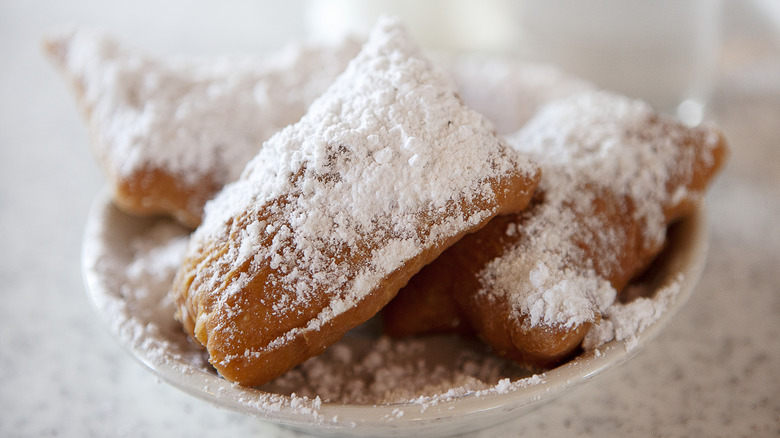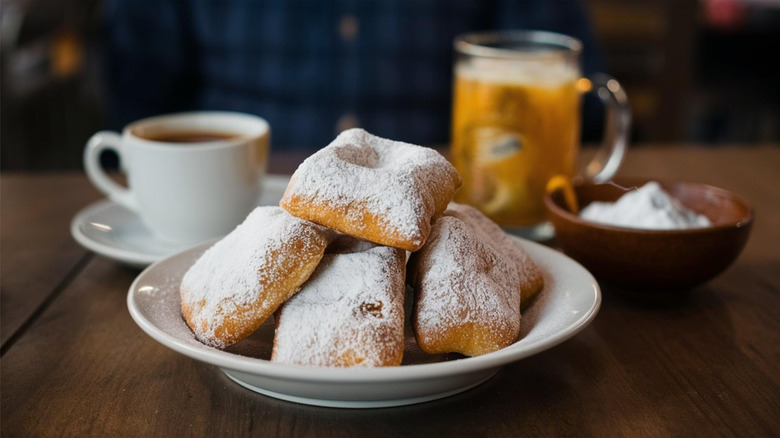What's The Difference Between Beignets & Fasnachts?
You might mistake beignets and fasnachts for ordinary doughnuts, but they have qualities that set them apart. Both are deep-fried pastries often dusted with powdered sugar, but their textures, histories, and preparation methods are different. These treats are rooted in the practice of using up ingredients like sugar, butter, and lard before the Lenten season, a time when many Catholic folks traditionally fast or give up certain foods until the Easter holiday.
Beignets are known for their light and airy texture, which comes from using choux pastry, a high-moisture dough. This dough puffs up during frying as steam forms within the pastry. With possible roots in ancient Rome, beignets were introduced to New Orleans by French colonists in the 18th century. Meanwhile, fasnachts (pronounced faws-nahk) first appeared in Germany and were brought to Pennsylvania in the 17th and 18th centuries by German immigrants. Both pastries are still enjoyed today in their respective regions, often during pre-Lenten celebrations.
What is a beignet?
Traditionally, beignets are square-shaped and served hot, and are dusted with powdered sugar. They are not usually filled or glazed, which is common in regular doughnuts. The dough is made by blending water, butter, flour, and eggs, and is then deep-fried until it becomes golden brown and puffy. Nowadays, beignets are a quintessential dessert of New Orleans, where they are a staple at the famous Café du Monde. They are often paired with café au lait, and can be ordered 24/7.
While layered king cake often symbolizes Mardi Gras, beignets are also quite popular during this time, as well as on Fat Tuesday (formerly called Shrove Tuesday), which is the celebration day before Ash Wednesday, the Catholic holiday marking the beginning of Lent. Different types of beignets can be found in other areas with French influence. In France, they might be filled with fruit or jam, while in Corsica, they are made with chestnut flour.
What is a fasnacht?
Fasnachts are known for their dense, cakier texture, which comes from the use of potatoes in the dough. As they have a crisp, and heavier exterior, they maintain a soft, slightly chewy interior. Fasnachts can be square, triangular, or round, but never have a hole in the center, and tend to be larger than beignets.
Some fasnachts are simply dusted with powdered sugar, while others are coated with granulated sugar, cinnamon sugar, or even filled with sweet creams or jams. The dough often includes mashed potatoes or potatoes that have been boiled and blended. Emulsifiers, which are products that help create a balanced environment in the dough, are often used to improve the feel and consistency of fasnachts.
These delicious desserts are usually associated with Pennsylvania Dutch Country, where they are enjoyed during the Fastnacht season, the time before Lent. They first appeared during Fat Tuesday; they are most common in southeastern and south-central Pennsylvania, particularly in counties like Lancaster, Berks, and Lebanon, and towns like Allentown, Reading, and York.



